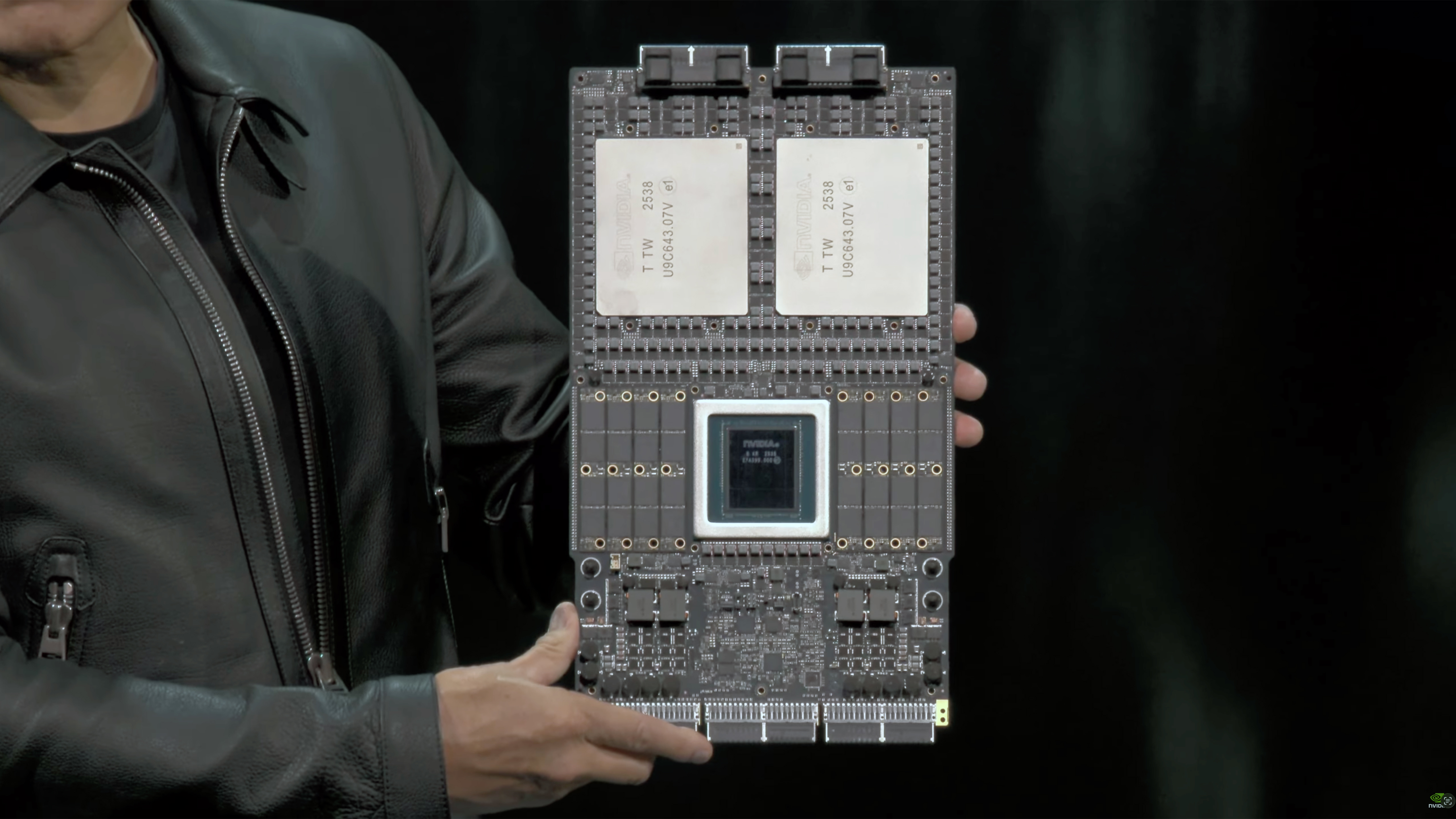Nvidia hints at early Vera Rubin launch — on track for $500 billion in GPU sales by late 2026 despite losing China

When Nvidia talked about the launch of its Vera Rubin computing platform for AI and HPC, it only mentioned the second half of 2026 as the launch window for the platform, but this week, Jensen Huang, chief executive of the company, has specified that Nvidia's next-generation CPU and GPU will launch already in the third quarter of 2026. The release of the new platform will be instrumental for the company in achieving $0.5 billion in sales of compute GPUs by the end of 2026, even without selling them to clients in China.
"We are on track to deliver Vera Rubin about Q3 time frame of next year, continuing our once-a-year cycle," Jensen Huang told Bloomberg. "Vera Rubin, seven different chips, are back in our labs, and the bring-up is happening across engineering teams. Probably... 20,000 people are bringing up Vera Rubin from silicon, to systems, to software, to algorithms, people are working around the clock. And this bring-up is going beautifully."
When talking about the Vera Rubin platform at Nvidia's GTC 2025, even in late October, Huang told the audience that the hardware would be in production this time next year, 'maybe slightly earlier.' Apparently, the company is on track to launch its next-generation data center platform already in the third quarter, so in the fourth quarter, the company will likely ship a significant number of Rubin GPUs, which will help the company to achieve its goal of selling $0.5 trillion worth of AI GPUs by the end of 2026.
Nvidia's Vera Rubin platform consists of the dual-chiplet Rubin GPU with 288 GB of HBM4 memory, the Rubin CPX accelerator with 128 GB of GDDR7 for the next-generation Vera CPU with 88 custom cores, the BlueField-4 DPU, a 6th-generation NVLink switch for scale-up scalability, and next-generation Ethernet and InfiniBand adapters for scale-out connectivity. All of the chips belonging to the Vera Rubin platform have taped out, and Nvidia has working silicon.
As AI is getting adopted by a wide range of companies, government agencies, and scientific organizations all around the world, the company can sell tons of its AI accelerators and adjoining chips. Therefore, the company is reportedly set to achieve the $0.5 trillion goal without taking into account China, its third-largest market just a year ago. Earlier this year, the U.S. government banned sales of all advanced AI processors (including AMD's cut-down Instinct MI308 and Nvidia's cut-down H20 GPUs) to China, whereas recently, Beijing forbade government organizations from buying foreign hardware, instead relying on domestic alternatives as part of the ongoing trade war between the U.S. and China.
Due to uncertainties with sales to China, Nvidia no longer includes the People's Republic in its revenue forecasts.
"We have said for some time now, our forecast for China is zero," Huang said. "[…] We would love the opportunity to be able to re-engage the Chinese market with the excellent products that we deliver and to be able to compete globally. The Chinese [AI] market is very large. This year, my guess is probably about $50 billion. […] We are going to continue to engage the U.S. government, continue to engage the China government to advise them and to encourage them to allow us to go back and compete in the open market. Until then, we should assume zero."
Get Tom's Hardware's best news and in-depth reviews, straight to your inbox.
Huang also denied that many of Nvidia's GPUs officially bound for other markets (such as Singapore) are diverted to China and said that the company regularly checks data centers worldwide to ensure that there is no diversion of restricted hardware to restricted countries like China.

Follow Tom's Hardware on Google News, or add us as a preferred source, to get our latest news, analysis, & reviews in your feeds.

Anton Shilov is a contributing writer at Tom’s Hardware. Over the past couple of decades, he has covered everything from CPUs and GPUs to supercomputers and from modern process technologies and latest fab tools to high-tech industry trends.